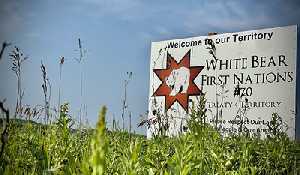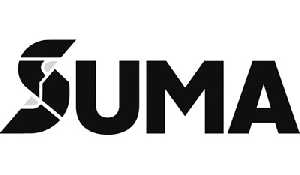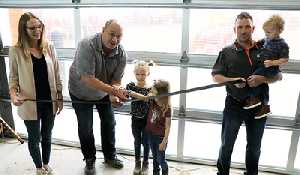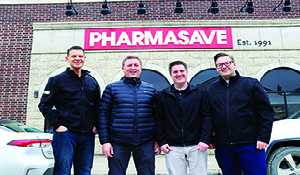Local highways among most dangerous in Sask.
October 3, 2012, 4:04 am
Kevin Weedmark


When 26-year-old Brendan Phillips of Regina died in a rollover on the Trans-Canada Highway between Wapella and Whitewood last Sunday, he became the latest statistic to add to the toll taken by local highways.
Meanwhile, no one was killed, but seven people were taken to hospital after three separate collisions over the space of six days at two different intersections with Highway 1 at Moosomin last week.
Traffic collision statistics collected by SGI show that highways in the area are among the most dangerous in Saskatchewan:
- The section of Highway 1 from Moosomin to the Manitoba border has the highest accident rate of any section of Highway 1 in Saskatchewan, at 0.74 accidents per million vehicle kilometres.
There were 21 collisions along the 20.2 km section of highway in 2010-the last year for which complete statistics are available from SGI-including 12 injuries and two deaths.
- Highway 8 as a whole has an accident rate far above the average in the province, with an accident rate of 1.00 accidents per million vehicle kilometres. Three sections of the highway in the local area have extremely high accident rates. The section from Moosomin to the Qu'Appelle Valley-by far the busiest section of Highway 8 with an average of 1,339 vehicles per day-had an accident rate of 1.11 collisions per million vehicle kilometres-22 accidents including six fatalities and four injuries. The section from Moosomin to Fairlight has an accident rate of 1.26 per million vehicle kilometres, and the section from Fairlight to Redvers has an accident rate of 1.74 per million vehicle kilometres-230 per cent of the provincial average.
- The town of Moosomin had 35 collisions reported in 2010, for an average of 1.29 per hundred population. That is about twice the provincial average of .66 per hundred population.
The latest stats from SGI end Dec. 31, 2010, so they don't include what seems to be an increasing number of collisions.
Over the course of six days last week, there were three serious accidents at two different intersections along Highway 1 in Moosomin.
On Saturday, March 3 a couple from Osler and a Moosomin man were in a collision at Main Street and Highway 1. On Tuesday, March 6 at the same intersection a Moosomin teen collided with a local woman in a pickup, who had to be rescued from her vehicle by the Moosomin Fire Department and taken to hospital. On Thursday, March 8, two semis collided at the east entrance to town on Highway 1, and three people were taken to hospital.
The town of Moosomin had requested changes along Highway 1 through town last year because of the number of accidents, but was turned down flat by Saskatchewan Highways.
Mayor Don Bradley says, in light of the SGI collision statistics, the town will try again.
"There have been a lot more accidents along the highway since they twinned it," Bradley said.
"We have had a lot of accidents at the intersections along the new highway. All three of those intersections have had accidents. This one at Main Street is bad, we've seen a lot of accidents out there." There were two accidents at the Main Street intersection just last week.
"We think there should be lights at that corner, and we've told Sask Highways that, but they said no, and we haven't heard any more on it," Bradley said.
"I wasn't aware it is the most dangerous section of Highway 1," he added. "Knowing that, we'll get on top of it.
"We see a lot of accidents at this (Main Street) corner. This is a dangerous corner and I still think there should be lights on it. I guess we have to lobby the highways department more. We'll give it another shot. All three corners are busy and we're going to see more accidents if nothing is done."
Moosomin MLA Don Toth said it's hard to understand why there are so many more accidents along the Trans-Canada in the area since the highway was twinned.
"It just boggles my mind when I hear of some of these mishaps and why they should happen," Toth said. "It would seem to me with the four lanes and straight sections of road we should see fewer accidents, but we're seeing more.
"I can't explain why there would be more accidents on that section of highway. We just have to shake our heads and wonder why. Is it a case of people not paying attention? It's difficult to say. Before the only place you had to slow down was at Moosomin, so maybe people were paying more attention."
He noted that Moosomin isn't the only centre with more accidents at an intersection once the highway was twinned.
"We see the same thing at Whitewood, at Highway 9," he said. "That intersection has been dangerous for a long time, even before the highway was twinned."
He said he has noticed the trend to more accidents at the intersections in Moosomin. "You're seeing a lot of accidents at the intersections."
He said Moosomin's mayor has raised the issue of highway safety with him.
"Mayor Bradley has talked to me about it, and it's certainly something I will touch base with the minister on," Toth said.
Safety review slated for summer
Ted Stobbs, Saskatchewan Highways assistant deputy minister for operations, told the World-Spectator Friday that highways officials will be in Moosomin this summer to review safety at the three intersections with Highway 1 in town.
"We did a safety audit in 2010, and the report indicated that what we had was adequate for the traffic volume at the time-it didn't warrant any changes yet, but they did say we should continue to monitor these intersections closely, because development is happening," Stobbs said.
"We are monitoring it on an ongoing basis, and a review will be done in the summer of 2012. We will come out and make sure we understand traffic patterns in the area. If changes are warranted, they will be made."
Stobbs said he will ensure that town council's concerns are taken seriously.
"Stakeholder input is important," he said. "I will ensure that they will touch base with town council and make sure we understand their perspective, too."
He said there are many options Saskatchewan Highways could consider to improve safety at the intersections, ranging from rumble strips on approaching highways to larger stop signs, flashing red lights along with stop signs, and acceleration and deceleration lanes.
"We are monitoring it on an ongoing basis, and will make changes if they are needed. As you get more traffic at an intersection you may need turn lanes because you have more vehicles turning," he said. "On cross roads you can have rumble strips, big stop signs, flashing red lights, a number of things you can do to an intersection to treat them."
He said Saskatchewan Highways deals with different issues on rural highways.
"You've got to be very careful operating on a highway in a rural area," he said. "There are nice and wide big ditches, and people feel safe, and maybe aren't as careful as they could be. We have a speed limit of 110. You've probably been passed going 110."
He said the idea floated by the town of a reduced speed zone may not be the best solution. "Your best option is to get the traffic going at the same speed," he said. "History shows us if you have that you will have less conflicts, less collisions.
"We've done a traffic study, and there's nothing indicating the public feels compelled to slow down at Moosomin, so they don't. If we were to artificially put in a speed limit, some will obey the law, and others won't so you will have a larger speed differential, which could lead to more accidents.
"You've been having some right angle accidents. If you have a speed zone and a higher speed differential, now you have this person crossing the highway, but with large differential in speed, it's more difficult for people to judge the speed of the traffic on the highway they're turning onto. That's not a good situation to have."
Stobbs said the Ministry of Highways will make any changes necessary to improve the safety of the three Moosomin intersections, if the review this summer identifies needed changes.
"We want to have our intersections safe," he said. "We will take a look at this, we will make sure that if we need any treatment we do it. If there is the traffic volume that indicates that changes are warranted, we will make them."



































